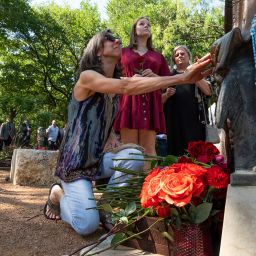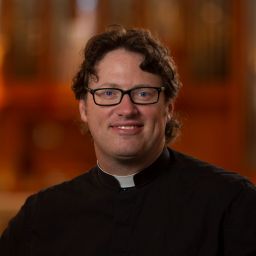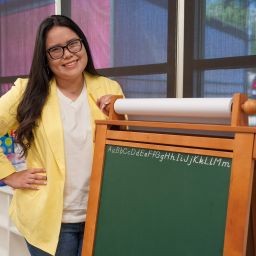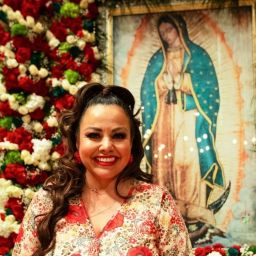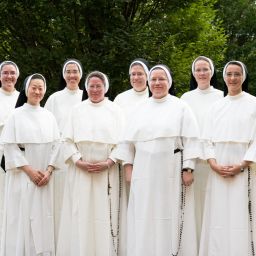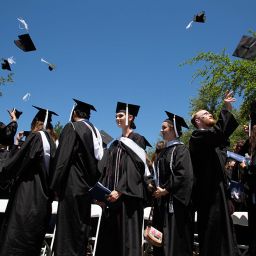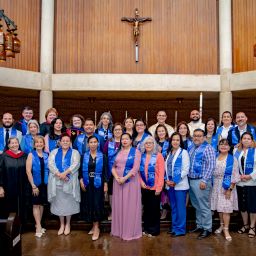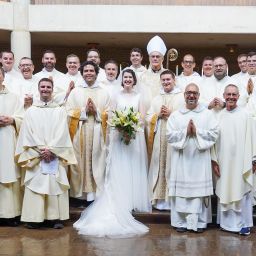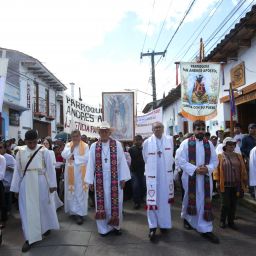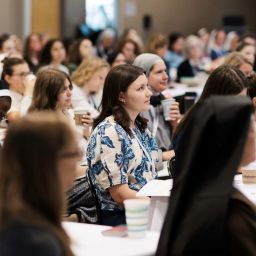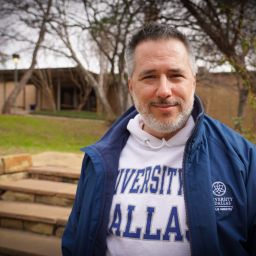
Our Lady of Guadalupe’s enduring impact on faith and culture
By Jodi Hunt, Ph.D.
Special to The Texas Catholic
“… I will console men and they will be at peace.” – Our Lady of Guadalupe to Juan Diego
For centuries, the veneration of Our Lady of Guadalupe has stood as a profound testament to the convergence of religious dedication and cultural identity within the Latino Catholic community and the greater American Catholic church. Rooted in the Virgin Mary’s apparition to a peasant native of Mexico, Juan Diego, the celebration of Our Lady of Guadalupe is more than a religious tradition as it now has become a vibrant cultural tapestry, lovingly woven by our Mother and her Son, that continues to be a guiding light for the lost ‘truth seekers’ who yearn for peace, truth, and beauty in the midst of a broken, chaotic world.
It is out of this fabric that one finds both the incredibly unique religious and cultural place that Our Lady of Guadalupe holds as her embodiment of divine presence continues to underscore the inseparable relationship between faith and culture. Her dedication to God’s people, in offering consolation and peace during the most trying of times, continues to resonate in the lived experience of Latino communities and is one of the primary reasons why such grand celebrations are dedicated to her many centuries after she first appeared to Juan Diego.
An ordinary walk leads to an extraordinary encounter
Indigenous converts to Catholicism, Juan Diego and his wife are believed to have been among the first converts to the faith after missionaries entered Mexico on the heels of the Spanish conquest of the Aztec people in the early 1500s. On the eve of Our Lady’s first appearance to Juan Diego, the native people of Mexico were still adjusting to the new realities birthed by their native land being conquered by Western foreigners who did not speak their language, dress like them, nor participate in the same religious practices handed down by their ancestors for generations. It was a rather trying time for natives like Juan Diego as they navigated their new religious awakenings and adapted to the Western culture that they had come to accept and embrace as part of their own cultural identity. But, “As the NICAN MOPOHUA, the original XVI Century Guadalupe’s apparition story states,” in the words of Pia Septien, director of the Spanish language programs at the Neuhoff Institute for Ministry and Evangelization at the University of Dallas, “ ‘ten years after the capture of Mexico City, peace allowed the mission fathers to teach the Catholic faith among the [natives] and to baptize their children…’ and so a beautiful story of loved and of profound faith lived for centuries by millions and millions of Catholic Hispanics.”
It is amid this newly found world that Juan Diego encountered what he first thought to be a native woman on one of his ordinary walks across Mexico’s Tepeyac Hill (now, modern day Mexico City) on Dec. 9, 1531. Speaking in the native language, the Virgin Mother appeared to Juan Diego dressed as a native woman, a cultural nuance that would easily become a pivotal reason why her apparition continues to be embraced by Latino communities across centuries; the ‘Mother of God’ was one of them, intimately connected to the people of God through their culture and religious understanding.
By appearing in this way to Juan Diego, Our Lady consoled the natives who struggled to accept Catholicism, as they now had a better understanding of God’s transcendence through their ancestral culture and traditions. This understanding of the significance of Our Lady’s appearance would be used by Mexican preachers in the 19th century to explain Mexico’s political and religious founding. As explained by future Mexican evangelists, it was preached that it was because of this encounter that the Mexican people were set free of ill-formed religious practices like idolatry and reconciled the tensions between the Spanish and Aztec people through a newly found common devotion to the Virgin Mother.
According to tradition, Our Lady of Guadalupe appeared to Juan Diego four times, first asking him to have a church built in her honor on the sight that she appeared, then requesting for a second time that Juan Diego approach the local Bishop after he did not believe Juan Diego’s story of the encounter and the request made by the Mother of God. After the bishop again denied the petition for a church to be built in honor of the Virgin Mother, the bishop instructed Juan Diego to show a miraculous sign that he indeed had been visited by the Mother of God.
After the second visitation, however, Juan Diego avoided meeting Our Lady again, choosing instead to take care of his uncle who had fallen ill. When it appeared that his uncle was about to succumb to his illness, Juan Diego hastily left his uncle’s home to go find a priest to offer his uncle Last Rites.
Although Juan Diego tried to avoid encountering Our Lady again, he was surprised by her along the new route he chose to take. Upon seeing Juan Diego, the Virgin Mother gently reminded him that she loved him greatly and that his choice to avoid her was a testament to his misunderstanding of how great her love for him really was. She added, “Am I not here, I who am your mother?” It was at this moment that Juan Diego also learned that his uncle had been healed.
So that Juan Diego may have a sign to show his bishop that he indeed had been visited by the Virgin Mother, Our Lady then instructed Juan Diego to return to Tepeyac Hill, where he would find roses to collect in his tilma and take to the local church. Miraculously, despite the barren nature of the land, Juan Diego found roses on the hill and did as instructed.
Upon his arrival at the church, he opened his tilma to show the bishop and others the beautiful roses Our Lady had gifted him, and a beautiful image of Our Lady appeared, in the same image and likeness that Juan Diego encountered — a miraculous event that not only symbolized the union of spirituality and humanity, but also reflected the profound connection between the divine and the marginalized, an extraordinary testament to Our Lady’s love and God’s enduring mercy for us all.
500 years celebrating Our Lady’s promise
Nearly 200 years after Our Lady appeared to Juan Diego, Pope Benedict XIV established December 12th as her official feast day. In Latino culture, especially in Mexico and North America, the celebration of Our Lady of Guadalupe is a manifestation of cultural pride and resilience. Her feast day — often marked by colorful processions, music, dance, and prayers — continues to resonate with the hearts of millions. Whether it’s through religious ceremonies or cultural festivities, the celebration of Our Lady of Guadalupe fosters a sense of community, identity, and spiritual connection that transcends borders and generations. As a part of Mexican and American culture for over 500 years, her presence is felt today more than ever as she has transcended beyond the walls of the Catholic church and out into the everyday world as a cultural icon for peace, hope, and justice. Our Lady of Guadalupe is a testament that ‘All will be well,’ so long as you trust God and do his will.
Perhaps, however, the best testament to why Our Lady of Guadalupe continues to be one of the most celebrated feast days and apparitions in Catholic history is an encounter with the faithful devoted to continuing the religious tradition of keeping Juan Diego’s pilgrimage and encounter with the Virgin Mother alive.
As Luz (Lucy) Gutierrez-Olvera, adjunct instructor at the Neuhoff Institute for Ministry and Evangelization at the University of Dallas, shared, “The Guadalupe apparition reveals Mary’s motherhood to all. The deeper we dig into the miracle of her appearance to Juan Diego, the more we fall in love with our sweet protector and intercessor. A relationship with Our Mother is a guarantee of a joyful path to Christ!”
Our Lady of Guadalupe appeared to Juan Diego over 500 years ago as one of us, a peasant along an ordinary path on an ordinary day in December. The simplicity and ordinariness of her appearance is one of the reasons why her appearance all those years ago still fascinates and draws millions of faithful Catholics to seek out the guidance of Our Lady during the ordinary days of our lives.
May our memory and devotion to her never cease and may we never forget the incredible gift we have of venerating her memory in the churches we build and the schools we consecrate to her, like our newly dedicated National Shrine Cathedral of Our Lady of Guadalupe and the University of Dallas.
Our Lady of Guadalupe, Pray for Us!
Dr. Jodi Hunt, Ph.D., is the executive director of the Neuhoff Institute for Ministry and Evangelization at the University of Dallas.

